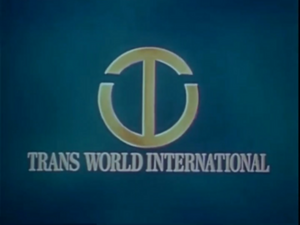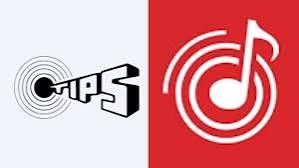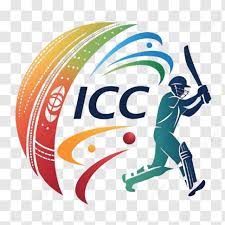Broadcasters rights
What are 'Broadcasters rights'?
Broadcasting rights[1] or Broadcasters reproduction rights are legal permissions that allow a broadcaster to transmit copyrighted content such as movies, tv shows, sports events, music and so on, to the public through various media including television, radio, and online platforms.
The term “broadcasting” according to Black’s Law Dictionary is “the distribution of audio and video content to a dispersed audience via broadcast radio, broadcast television or other technologies.”
In the most basic terms, the word broadcasting means the act of sharing any content to the public (viewers) using various media platforms.
Broadcasting rights (also known as media rights) are those rights which are given to a broadcasting organisation that negotiates with a commercial concern as a sports or news governing body, film or shows distributor, in order to broadcast its works on various broadcasting outlets like television, radio and the internet. The broadcaster may choose to either broadcast it live, delayed or as highlights. These rights are "neighbouring rights" to copyright, focusing on the broadcast itself.[2]
Official Definition of 'Broadcasters rights'
Broadcasting rights in India date back to the Indian Telegraph Act of 1885[3], which created a government monopoly on the broadcast business. [4] This act set the groundwork for the legislation controlling broadcasting in India, but specific broadcasting rules did not develop until the mid-1990s.[5]
Definition of 'Broadcasters rights' as in International Instrument
According to Copyright, Designs and Patents Act, 1988 -[6] UK , “Broadcast” means an electronic transmission of visual images, sounds or other information which -
a) is transmitted for simultaneous reception by members of the public and is capable of being lawfully received by them, or
(b) is transmitted at a time determined solely by the person making the transmission for presentation to members of the public.
'Broadcasting Rights' as defined in legal provision
Broadcasting reproduction rights, as defined under the Indian CopyrightAct, 1957[7], are special rights granted to broadcasting organisations allowing them to reproduce their broadcasts, including making sound and visual recordings, for a period of 25 years from the broadcast date.[8]
Chapter VIII of the Copyright Act, 1957 talks about Rights of Broadcasting Organisation and of performers. Section 37[9], titled 'Broadcast reproduction right' provides under it -
Section 37(1)
which states that every broadcasting organisation shall have a special right to be known as "broadcast reproduction right" in respect of its broadcasts.
Section 37(2)
further states that the broadcast reproduction right shall subsist until twenty-five years from the beginning of the calendar year next following the year in which the broadcast is made.
Section 37(3)
mentions that during the continuance of a broadcast reproduction right in relation to any broadcast, any person who, without the license of the owner of the right does any of the following acts of the broadcast or any substantial part thereof -
(a) rebroadcast the broadcast; or
(b) causes the broadcast to be heard or seen by the public on payment of any changes; or
(c) makes any sound recording or visual recording of the broadcast; or
(d) makes any reproduction of such sound recording or visual recording where such initial recording was done without license or, where it was licensed, for any purpose not envisaged by such license; or
(e) sells or gives on commercial rental or offer for sale or for such rental, any such sound recording or visual recording referred to in clause (c) or clause (d) shall, subject it the provision of section 39[10], be deemed to have infringed the broadcast reproduction right.
History
Broadcasters rights are governed by the intellectual property rights (IPR), copyright laws, and specific broadcasting regulations. The introduction to broadcasting technology in India occurred before independence. The Telegraph Act, 1885 was the first piece of legislation of significance that governed the installation, upkeep and operation of wireless equipment that gave the central government of India sole rights to establish, maintain and operate telegraphs.

Broadcasting began as an operations structure which permitted control to only a few selected participants. The concentrated power structure established rules and policies to defend this particular group of people. The text indicates that broadcast monopolisation continues across a limited number of organisations. Broadcasting developed its technological basis as firms started to adopt AM radio broadcasting technology throughout 1920 when vacuum tube radio transmission systems gained popularity. Numerous electronic communication technologies including telegraph and telephone existed before broadcasting but maintained point-to-point functionality since messages were meant for solitary collectives. The origins of broadcasting as a term derive from seed-sowing through broad field scattering techniques during agricultural practices.
The Indian Broadcasting Company (IBC)[11] launched in 1927, India's first ever radio stations in Bombay, Calcutta and Lahore. However, it shut down in 1930 due to financial issues. The Government of India took over broadcasting after IBC closed and started the Indian State Broadcasting Services(ISBS). ISBS was renamed All India Radio (AIR) in 1936 and the following year it moved from the labour department to the communications department. Later the department of information and broadcasting was established in 1941 and after independence in 1947 it became the ministry of information and broadcasting. The Cinematograph act, 1952 was created for the system of Film censorship to evaluate, regulate and approve movies for exhibition including licensing.

Currently, the ministry of I&B introduced the IT (Intermediary Guidelines and Digital Media Ethics Code) Rules 2021.
Types of Rights under Broadcasters rights:
Exclusive Rights
A copyright exclusive license is one in which ownership in one or more of the copyright owner's rights is transferred by the copyright owner's rights is transferred by the copyright owner to a third party.
It guarantees the broadcasters leadership over their content transmission options while preventing unauthorised third parties from duplicating broadcasted content, Broadcasters need the distribution right to protect their intellectual property and create revenue from their broadcasted content. Broadcasting organisations can enforce this right throughout radio broadcasting together with television broadcasting and streaming service platforms specifically to combat widespread content piracy in the digital era.
Broadcasting organisations maintain complete control over content distribution to multiple audiences through their Commercial Rental Right. Broadcast organisations dedicate major capital together with innovative skill to produce premium content to entertain and instruct audiences. Broadcasting organisation's possess exclusive authority to decide whether rental of broadcast content should be permitted or banned for commercial purposes since they need protection of their investments and content value.
Non-exclusive Rights
The core feature is that more than one entity can be permitted to exercise the right. Under this, the owner keeps the authority to grant simultaneous access to their work on property for multiple users. The property of allowing multiple users simultaneously distinguishes this particular right from other types of rights.
Through non-exclusive authorisations rights holders promote market competition together with greater content distribution since the system stops monopolisation and lets multiple entities access and utilise the work. The rights holder enjoys spectrum for choosing different license agreements as a result of their non-exclusive status. Broadcasting uses statutory licenses under legislation and collective licensing through organisations to let several entities exploit works under established conditions.
Pay-per-view Rights
Pay-per-view (PPV) is a type of pay television or webcast service that enables a viewer to pay to watch individual events via private telecast. It requires the viewer to pay directly for the specific content they want to watch on-demand videos.
Viewers can achieve excellent monetisation results by using pay-per-view due to its capability to allow viewers to access specific content with their payments. Viewers obtain temporary access to content through pay-per-view since it allows them specific time periods or view restrictions.
The streaming service company utilises pay-per-view monetisation since it rents its video content directly to viewers. Virtual concert streaming platforms leverage pay-per-view monetisation when they sell tickets for such events.[12]
Terrestrial Rights
Terrestrial Rights means the broadcast by television of analogue and/or digital signals by means of VHF or UHF wireless telegraphy, whereby the audio and visual portions of such broadcast are receivable without charge to the viewer (other than governmental license fees) by means of a standard home roof top antenna or television set built-in antenna.
Online Streaming Rights
Online streaming rights are the legal permits needed to distribute content such as films, television episodes, and music online via platforms such as Netflix, Amazon Prime, and YouTube. These rights, which are typically part of a larger intellectual property framework, give content producers and owners control over how and where their work is streamed.
As in Warner/Chapel Music Ltd. v. Spotify Ab[13], while Section 31(D) grants the right to broadcast musical works and sound recordings, the point to consider with online streaming is that once the relevant rights are licensed by the streaming company, it would also include the right to reproduce, which is electronic storage extending to be a part of data transfer.
Table for Types of Broadcasters rights:
| Right Type | Explanation |
|---|---|
| Exclusive Rights | Only one party has the right to use or distribute the content. |
| Non-exclusive Rights | Multiple parties can use or distribute the same content simultaneously. |
| Pay-per-view Rights | Right to charge viewers for each individual view of the content. |
| Terrestrial Rights | Rights to broadcast content via traditional over-the-air television signals. |
| Online Streaming Rights | Rights to distribute content via internet-based streaming platforms. |
Infringement of Broadcasting rights primarily in the context of the Copyright Act, 1975
The broadcasting reproduction rights definition exists within Section 37 of the Copyright Act 1957. Electronics render radio and television signals broadcast-able to the public through transmission systems which makes up the core meaning of broadcasting.[14] There exists a definitive list of acts that violate the rights to broadcasting reproduction if someone operates outside of rights holder permission.
The following prohibited actions constitute broadcast infringements: rebroadcasting original broadcasts and public sell of broadcasts and sound or visual recordings despite lack of authorisations. Any unauthorised reproduction of initial recordings done without a license results in infringement in addition to the infringement of the original recording itself. Any commercial use of the broadcast or its unauthorised sale breaks the set of integrity rights. The document grants protection from infringement when researchers or instructors conduct private usage of sound recordings from radio broadcasts for educational or research purposes.[15]
What is not allowed under the broadcasters rights in India?
Broadcasting in India is strictly regulated to protect public order and legal requirements. Obscene or defamatory content, as well as any material inciting violence or threatening law and order, are strictly forbidden. Furthermore, broadcasters must avoid content that is in contempt of court[16] or undermines the integrity of high-ranking officials such as the President, Governors, and the Judiciary.
Aside from these legal prohibitions, broadcasters must avoid:
i. Anything that fosters animosity or hostility between different religious, racial, linguistic, or regional groups.
ii. Content that disrupts public order, criticises friendly countries, or targets religions or communities is likewise not permissible.
iii. Commercial radio broadcasters are generally prohibited from transmitting news or current affairs programming, with the exception of state broadcaster-provided news bulletins.
iv. Broadcasting or streaming licensed and copyrighted professional sporting events without the express consent of the relevant sports league or organisation is likewise banned.
Additionally, broadcasters must verify that all content is certified by the Content Evaluation Committee (CEC)[17]. Any content that violates the criteria set forth in their license agreements is likewise prohibited. These restrictions are in place to protect the public interest and promote responsible broadcasting practices.
Rebroadcasting is expressly prohibited for amateur radio stations when used for broadcasting purposes. This means that amateur stations cannot engage in the dissemination of radio communications intended for reception by the public, whether directly or through intermediary relay stations. The FCC report states that amateur radio's purpose is distinct from that of broadcasting, ensuring that the amateur stations are not used as a substitute for or in competition with licensed broadcast services.
The rules for amateur radio facilities prohibit their use in program production activities as well as news gathering activities that would serve broadcast needs.
This legal provision blocks amateur radio operators from serving as remote receivers or back-up distributors for broadcast services to preserve amateur radio operations from commercial broadcasting activities. The Federal Communications Commission(FCC) maintains that amateur radio exists for non-profit activities while exempting the use of amateur radio systems from broadcasting-specific tasks which commercial entities handle.
All amateur radio stations need permission to retransmit programs and signals except during emergency response situations when they can transmit any class of radio station signals.
Amateur radio station operators must strictly limit their operations to personal amateur communication because this directive stops them from retransmitting content obtained from other radio service types. Emergency communication use receives defined limitations to minimize its use when necessary for vital life-saving or property-saving emergencies.
Precedents
Secretary, Ministry of Information and Broadcasting v. Cricket Association of Bengal & Anr (9 February, 1995) [18]
Facts of the case:
The Cricket Association of Bengal (CAB) wanted to host the Hero Cup, an international cricket tournament, in 1993 at Calcutta .The CAB arranged with a foreign TV agency - Trans World International (TWI) to produce the live broadcast and uplink it via a foreign satellite for global telecast. CAB requested permission from the Ministry of Information and Broadcasting and Doordarshan the state-owned broadcaster to uplink the broadcast signal from India. The Ministry denied permission, saying only Doordarshan had the right to broadcast from India. CAB challenged this, claiming that the denial violated their fundamental right to freedom of speech and expression.

Issue:
Whether the right to freedom of speech and expression under Article 19(1)(a) includes the right to broadcast or the right to telecast sports events?
Judgement:
The Court ruled in favour of the Cricket Association of Bengal. The Court held that Article 19(1)(a) includes not just the right to express but also the right to disseminate information, including through modern media like television, thus the right to telecast or broadcast is an important part of this freedom.
This case is a landmark case as it expanded the scope of broadcasting rights and also emphasised the democratisation of media and limited state control over information dissemination.
Wynk Ltd. and Ors. vs. Tips Industries Ltd (23 April, 2019)[19]
Facts:
In this case, Tips Industries Ltd, a prominent music label owning copyrights to over 25,000 songs. Wynk Music Ltd, an online music streaming platform owned by Airtel, offering users access to a vast music library through streaming and downloads. Tips Industries granted Wynk a license to stream its music. Upon expiration of this license, renewal negotiations failed, yet Wynk continued to stream and allow downloads of Tips’ songs. Wynk asserted that it was entitled to a statutory license under Section 31D of the Copyright Act, 1957, permitting it to use the music without explicit consent from Tips, provided it paid the prescribed royalties.
Issue:
Does the statutory licensing provision under Section 31D extend to internet-based streaming platforms like Wynk?
Judgement:
This judgment provided clarity that Section 31D’s statutory licensing does not extend to internet streaming services, delineating the boundaries between traditional broadcasting and digital platforms. This case serves as a reference in the realm of digital copyright law, emphasising the importance of obtaining proper licenses and the limitations of statutory provisions in the context of modern technological advancements.

Icc Development (International) Ltd vs New Delhi Television Ltd (18 September, 2012)
Facts of the case:
In this legal dispute, the plaintiffs, ICC Development and ESPN Star Sports, assert their exclusive broadcasting and copyright rights for the ICC Cricket World Cup 2011, claiming the defendant, NDTV, engaged in unauthorised use of the event's footage, exceeding established guidelines and placing advertisements in a manner that infringed upon these rights. The defendant responded by arguing that their use constituted "fair dealing" under the Copyright Act and that any injunction would violate their freedom of speech.
Issue:
This paragraph clearly describes the key legal concerns that the court must resolve, with a particular emphasis on establishing the limitations of "fair dealing" in the context of broadcast footage and advertising.
Judgement:
The court's analysis focusses on the Copyright Act, particularly concerning broadcasting rights and "fair dealing," drawing heavily from the precedent set in ESPN Star Sports v Global Broadcast News Ltd. & Ors. to distinguish between copyright and broadcasting rights, while also incorporating insights from Media Works NZ Limited and examining guidelines from both the plaintiffs and the News Broadcasters Association (NBA) to determine permissible footage usage; crucially; the court emphasises the constraints of free speech when it interacts with copyright law, underscoring the delicate balance between maintaining exclusive broadcasting rights and preserving press freedom, with the "fair dealing" doctrine serving as the central point of legal argument.

Broadcaster rights as mentioned in various legal domains
Broadcasters' rights are not isolated but are deeply intertwined with a wide range of legal frameworks. Here's a breakdown of it:
Copyright law
This is the most fundamental connection. Broadcasters' rights are classified as "related rights" or "neighbouring rights" under copyright laws. This means that they exist alongside the copyright of the content's original creators. Copyright law gives broadcasters the right to control how their programs are reproduced, rebroadcast, and communicated to the public.
For instance, the television network files a lawsuit against the online platform because it illegally streamed its cricket match broadcast without permission. The television network takes this action according to their broadcasting rights that serve as protected related rights under copyright law.
Contract law
Broadcasters regularly enter into agreements to acquire the rights to broadcast programming. These contracts specify the breadth of their rights, such as the duration, territory, and permissible uses of the content. Licensing agreements are an important aspect of this process, as they allow broadcasters to use copyrighted material.[20]
For instance, a broadcast company acquires exclusive television rights for movie broadcasting through an agreement with a film studio spanning a certain timeframe. The license agreement defines key terms that include payment amounts along with showing duration and broadcast area specification.
Telecommunication law
Broadcasting frequently requires the use of telecommunications infrastructure, such as radio frequencies and satellite communications. Telecommunications regulations govern the use of these resources, ensuring fairness and prohibiting interference.
For instance, the telecommunications regulatory authority grants radio stations permission to broadcast through exclusive radio frequencies as part of a licensing process. Frequency allocation and interference terms are regulated aspects of a license granting.[21]
Media and Entertainment law
This large topic of law includes different restrictions governing the creation, distribution, and consumption of media content. It establishes standards for content regulation, advertising, and media ownership.
The laws regulating the complete life cycle of media include its creation and distribution and its ultimate use. The legislation establishes guidelines which control the content along with promoting advertising along with defining ownership terms. The regulatory laws of content apply constraints towards obscenity and defamation along with hate speech. The rules which govern advertising refrain from allowing misleading statements to pass through. Ownership laws prevent monopolies. Law protects creative works along with brands through intellectual property framework. Privacy laws regulate data use. Telecommunications law manages infrastructure. Entertainment contracts define industry relationships. The legal industry demonstrates dynamic adaptability by responding to technological developments and societal transformations.
For instance, a television channel receives monetary penalties when its broadcast violates advertising regulations and produces material which offends regulatory standards.
Competition law
Monopolies and unfair competition are examples of anti-competitive practices that competition law seeks to avoid. This is relevant to broadcasters' rights since exclusive broadcasting rights can often cause competition issues. Competition Law in the media sector stops monopolies and unfair practices through measures that safeguard a level competition environment. The law tests for all kinds of anti-competitive behaviour by companies which abuse their market dominance and form cartels and merge to lower competition. Exclusive sports broadcasting rights receive substantial attention from these explanations. The authorities analyse whether the rights cause market foreclosure, lead to higher consumer prices or reduce innovation in the sector.
Digitally-operated platforms now experience heightened legal monitoring of their practices to prevent self-preferencing and their control of data as well as their methods for algorithmic control. Media's global reach requires immediate action between countries to achieve proper results. Through competition law enforcement consumers receive maximum welfare protection by maintaining diverse content offerings and fair prices with innovative industry practices.
For instance, A government authority examines if a leading media company turns into a monopolistic entity through its sole acquisition of sports broadcast rights.
International law
Additionally international accords such as the TRIPS Agreement provide basic requirements for the protection of broadcasters' rights. International treaties also concern cross-border broadcasting and satellite broadcasts. Testifying to the intricacy of Section 31D interpretation in India's Copyright Act of 1957 are the additional considerations linked to international intergovernmental agreements. As part of the TRIPS (Trade-Related Aspects of Intellectual Property Rights) Agreement[22] India along with other signatory nations needs to create legal channels to stop unauthorised broadcasts since TRIPS established minimum standards regarding broadcasters' rights protection. The international treaties strengthen worldwide safety measures needed to defend broadcasting organisations because these protections must operate across international borders.
The international norms of broadcasting require Indian copyright legislation including Section 31D to match agreements such as TRIPS because of their influence on cross-border broadcasting. The measures protect broadcasting entities in their national territory by allowing international sharing of information while upholding intellectual property principles. The quick advancements in digital communication processes require builders and creators of content need ongoing legislative review which keeps India's digital copyrights up to date and maintains balance between stakeholders.
For instance, A nation updates its copyright statutes in accordance with the TRIPS Agreement principles that defend broadcasters from unauthorised rebroadcasts.
Constitutional law
Many countries, including India, recognise freedom of speech and expression as a constitutional right. This right may overlap with broadcasters' rights, particularly in the context of news and current affairs broadcasting. Broadcasters' rights come into conflict with fundamental freedoms of speech and expression which are protected in the constitutions of many nations including India throughout a complex legal system. News and current affairs broadcasting demonstrates the highest level of overlap between broadcasting rights and freedom of speech and expression protection because news dissemination maintains vital links to democratic principles. Broadcasters maintain rights for protecting their content together with fair compensation protection yet these rights need to adjust to public access of information and freedom of expression.
National security concerns and public safety justify governmental regulations in broadcast content governance thereby generating judicial issues about broadcasting deregulation versus state oversight. Courts must solve these opposing interests through public challenges by examining constitutional and human rights provisions. A proper legal structure remains essential because it enables public dialogue through safeguards protecting state security. Broadcasters need open and reasonable guidelines alongside the protection of essential rights in order to perform their democratic responsibilities.
For instance, This legal dispute addresses how broadcasters should manage their communication liberties while the government imposes content restrictions for national defence purposes.
Information Technology law
With the rise of online streaming, broadcasters' rights are heavily intertwined with IT legislation. This contains legislation regarding online copyright infringement and digital rights management. Online streaming has bound broadcast rights to information technology legislation through a multifaceted legal framework which influences broadcasters' rights protection. This intersection mainly centers on two matters that affect broadcasting protection in digital spaces: DRM mechanisms and online copyright infringement. Online platforms receive their legal duties and content creators obtain their rights from IT legislation specifically when managing unauthorised material and user-submitted content.
Streaming services face legal threats over user-uploaded copyrighted broadcast content which creates a typical case of this legal complexity. The challenge of monitoring user activities and stopping copyright violations leads platforms into various legal disputes which determine their legal obligations. Broadcasters use DRM security technologies to protect their content which results in added complications for their legal position. The intent of DRM regulations to stop unauthorised access and copying creates legal barriers for streaming platforms because users attempt to bypass these protective measures.
The intersection between broadcasters' rights with IT legislation demands a complete set of laws that properly address digital age requirements. An appropriate legal design system needs to establish mutual equilibrium between content creators' interests and user rights while accounting for platform operational requirements. A refined system of copyright enforcement requires staff to handle both changing digital content distribution patterns and active technological advancements. Stream services are bound to face continuous attention from legal authorities as they continue their expanding growth in the market.
For instance, In this litigation the streaming service faced legal action because users uploaded copyrighted broadcasted content to their platform. Online streaming services are vulnerable to legal action because of DRM regulations implemented by broadcasters for protecting their content.
Developments surrounding the Broadcasting Bill in India
The Broadcasting Bill in India triggered major controversies among Indian citizens. The 2023 version of the bill[23] received initial consultation from the Ministry of Information and Broadcasting (MIB)[24]. A new version of the 2024[25] draft was distributed among exclusive stakeholders but this secrecy led to doubts about both transparency and inclusivity. The revised bill encountered criticism from multiple parties because it would enforce digital creator obligations and because it contained uncertain terminology and coverage scope.
The 2024 bill's consultation phase encountered prominent criticism because stakeholders condemned its dark room meeting approach and its restricted sharing of information during discussions. The authors of the bill commanded recipients to preserve confidentiality about the bill which remained unpublished. The combination of hidden bill contents and its established provisions resulted in vocal opposition from digital creators and digital rights organisations. The MIB allegedly listened to stakeholder demands which led to either reconsideration or withdrawal of the 2024 draft since it requested that stakeholders give back their provided copies.
Through its advocacy efforts the Internet Freedom Foundation (IFF)[26] protected transparency while alerting the public about this bill. Digital freedom protection efforts of the Internet Freedom Foundation include submitting RTI applications and sending correspondence to the MIB and organizing public awareness initiatives which expose digital freedom dangers. The future actions of the MIB regarding their broadcast legislation remain uncertain because it remains unclear whether a revised version of the bill will eventually surface. The Internet Freedom Foundation maintains its fight for digital rights protection while doing advocacy work for free speech rights despite the controversial nature of the Broadcasting Bill in India.
Challenges faced
Section 31(D) of the Copyright Act, 1957, provides a statutory license for broadcasting organisations to use published literary, musical works, and sound recordings.
The article, Ambiguity of Section 31D of the Copyright Act, 1957: Broadcasting Rights in Digital Age[27], examines how Section 31D of the Copyright Act, 1957 has sparked controversy in digital contexts for its interpretation scope. Broadcasting organisations acquire a legal permission to share published literary and musical texts along with sound recordings to the public under this section of the Act. The emergence of online streaming platforms created substantial uncertainty around which entities qualify as "broadcasting organisations" under this legal framework. The definition of "broadcasting organisation" creates a significant point of disagreement because the Act fails to establish legal boundaries within its text. According to the Act's definition "broadcast" means "communication to the public" but internet streaming remains undefined. The 2016 Department of Industrial Policy and Promotion memorandum suggested online platforms must be included yet the Act and its rules make no explicit mention of "internet broadcasting" for statutory licensing.
The research study of broadcasting rights represents a difficult investigation area because it encounters multiple obstacles that emerge from technology developments along with legislative changes and constant modifications to the media industry. The leading obstacle in broadcaster's rights research stems from the fast speed of technological innovation. Innovation continues at an unprecedented rate under digital age conditions which has generated streaming platforms along with digital rights management systems and online platforms. Researching the technological changes along with their intricate legal aspects presents major problems for the scientific team. The simple nature of digital piracy along with unauthorised online distribution keeps researchers in a continuous pursuit of current trends.
References
- ↑ The Indian Copyright act, 1957, Section 37 sr
- ↑ Rights of Broadcasting organisation and of performers [1]
- ↑ Indian Telegraph act, 1885
- ↑ [2]Broadcasting Legislation in India
- ↑ [3]History of TV Broadcasting Regulation in India
- ↑ [4]Copyright, Designs and Patents Act, 1988 - UK
- ↑ Indian Copyright Act, 1957 [5]
- ↑ Indian Kanoon [6]
- ↑ Indian Copyright Act, 1957
- ↑ Section 39 of Copyright Act[7]
- ↑ Indian Broadcasting Company(IBC)[8]
- ↑ Terrestrial Rights [9]
- ↑ Online Streaming: Royalties and Statutory Licensing in India[10]
- ↑ Rights of Broadcasting organisation and of performers [11]
- ↑ Section 37 in The Copyright Act, 1957[12]
- ↑ contempt of court[13]
- ↑ Content evaluation Committee [14]
- ↑ 1995 SCC (2) 161; AIR 1995 SC 1236
- ↑ 2019 SCC OnLine Bom 13087
- ↑ Broadcasting and Performing Rights in Copyrights[15]
- ↑ The Telecommunications Act, 2023[16]
- ↑ TRIPS Agreement [17]
- ↑ Ministry of Information and Broadcasting Proposes Broadcasting Services (Regulation) Bill, 2023 [18]
- ↑ Ministry of Information and Broadcasting[19]
- ↑ New Broadcasting Bill 2024 [20]
- ↑ Internet Freedom Foundation(IFF) [21]
- ↑ Ambiguity of Section 31D of the Copyright Act, 1957: Broadcasting Rights in Digital Age [22]
